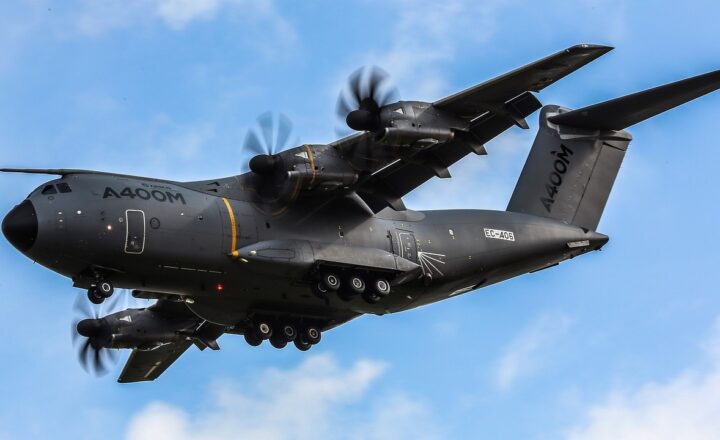How Military Drones are Changing the Rules of Engagement in Asymmetric Warfare
November 16, 2024

Asymmetric warfare has always posed unique challenges for military strategists and combatants alike. Traditional military operations, dominated by the capabilities of conventional forces, are increasingly being disrupted by non-traditional tactics employed by asymmetric opponents. One of the most significant developments in this area is the use of military drones. These unmanned aerial vehicles (UAVs) are transforming battlefields around the globe, altering the rules of engagement for both state and non-state actors.
Military drones have evolved dramatically since their inception, moving from remote-controlled aircraft used for surveillance into sophisticated systems capable of real-time intelligence gathering, targeted strikes, and even autonomous operations. As conflicts become more complex and adversaries more elusive, the adoption of UAV technology is set to redefine engagement strategies.
This article explores how military drones are impacting asymmetric warfare, the advantages they provide to armed forces, the ethical questions they raise, and their future in modern combat scenarios.
1. The Rise of Military Drones
Drones began as experimental technology used primarily for reconnaissance purposes. The initial concept, a low-cost alternative to manned aircraft, has transitioned into an essential component of modern military operations.
As the conflicts in Iraq and Afghanistan unfolded, military drones such as the MQ-1 Predator and MQ-9 Reaper gained prominence for their versatility. These systems allowed operators to surveil, track, and engage targets while significantly reducing risks to personnel.
Correspondingly, the operational success of drones has led to the proliferation of drone technologies across various military and non-military organizations globally. Countries such as Israel, China, and Turkey have developed their own advanced drone programs, presenting new threats that contribute to the dynamic nature of asymmetric warfare.
2. Advantages of Drones in Asymmetric Warfare
The integration of military drones into combat scenarios offers several strategic advantages over traditional approaches:
- Reduced Risk to Personnel: Drones are designed to conduct missions without risking human life, particularly in high-threat environments like urban warfare. The capability to carry out operations remotely minimizes casualties among service members, allowing for more sustained engagements against insurgent forces.
- Enhanced Surveillance and Intelligence Gathering: Drones are equipped with advanced sensors and cameras, offering real-time intelligence that informs decision-making. This technological edge provides forces with a clearer picture of the operational environment, making quick and informed responses possible.
- Precision Strikes: Armed drones can engage specific targets with a high degree of accuracy, thus reducing collateral damage. This precision makes them invaluable in urban settings where non-combatants may be present, allowing for surgical strikes against high-value targets.
- Cost-Effectiveness: Compared to traditional aircraft, drones are often less costly to operate. Lower maintenance costs, ease of deployment, and fewer logistical requirements make them attractive for extended operations.
- Persistence and Flexibility: Drones have the ability to loiter over targets for extended periods, allowing commanders to wait for the optimal moment to strike. This flexibility is crucial during engagements where intelligence and timing dictate success.
The combination of these advantages fundamentally alters the equation of warfare, especially in regions where asymmetric threats are prevalent.
3. Ethical Implications and Controversies
While the technical and operational benefits of using drones in combat are evident, the ethical implications cannot be overlooked:
- Civilian Casualties: Despite the precision claimed by drone strikes, incidents of civilian casualties persist, raising significant questions about the morality of their deployment. High-profile cases have triggered public outcry and demands for more stringent controls and transparency in their use.
- Lack of Accountability: Drone operations, often carried out by remote personnel far removed from the battlefield, can create a disconnect between the operators and the consequences of their actions. This lack of accountability has led to calls for reform in drone usage policies.
- Desensitization to Warfare: There is a growing concern that operating drones creates a more sanitized view of warfare, making it easier for nations to engage in conflict without the same level of consideration that would accompany manned operations. This desensitization can lead to a more frequent recourse to military options in resolving disputes.
These ethical challenges have prompted debates among policymakers, military leaders, and human rights advocates regarding the future of drone warfare and the need for regulations that prioritize human rights and accountability.
4. The Future of Drones in Warfare
As drone technology continues to advance, their role in asymmetric warfare is likely to grow:r
- Autonomous Drones: The development of AI and machine learning technologies is ushering in an era of autonomous drones, capable of making real-time decisions. This evolution presents both opportunities and challenges, as the implications of removing human oversight in life-and-death situations remain profound.
- Swarm Technology: Future drone operations may leverage swarm technology, coordinating multiple UAVs for enhanced surveillance and strike capabilities. This collective action can create significant challenges for adversaries, creating a new dynamic in warfare.
- Integration with Other Technologies: Drones are likely to be integrated with other advanced technologies, such as cyber warfare and advanced sensor systems, enhancing their effectiveness in asymmetric warfare scenarios. This integration will magnify their impact and lead to new strategies on the battlefield.
As military drones evolve, their impact on asymmetric warfare will undoubtedly continue to evolve, reshaping strategies and transforming the face of combat.
Conclusion
Military drones have redefined the rules of engagement in asymmetric warfare, offering distinct advantages such as enhanced surveillance, precision strikes, and reduced risk to personnel. However, they raise critical ethical concerns regarding accountability and civilian casualties that must be addressed.
As we move further into the age of drone warfare, it is essential for international regulations and ethical considerations to keep pace with technological advancements. The balance between utilizing drones for operational effectiveness and maintaining moral responsibility will define the future of military engagement in asymmetric conflicts. Understanding this balance is crucial for fostering a stable and just global environment in the face of evolving warfare tactics.







